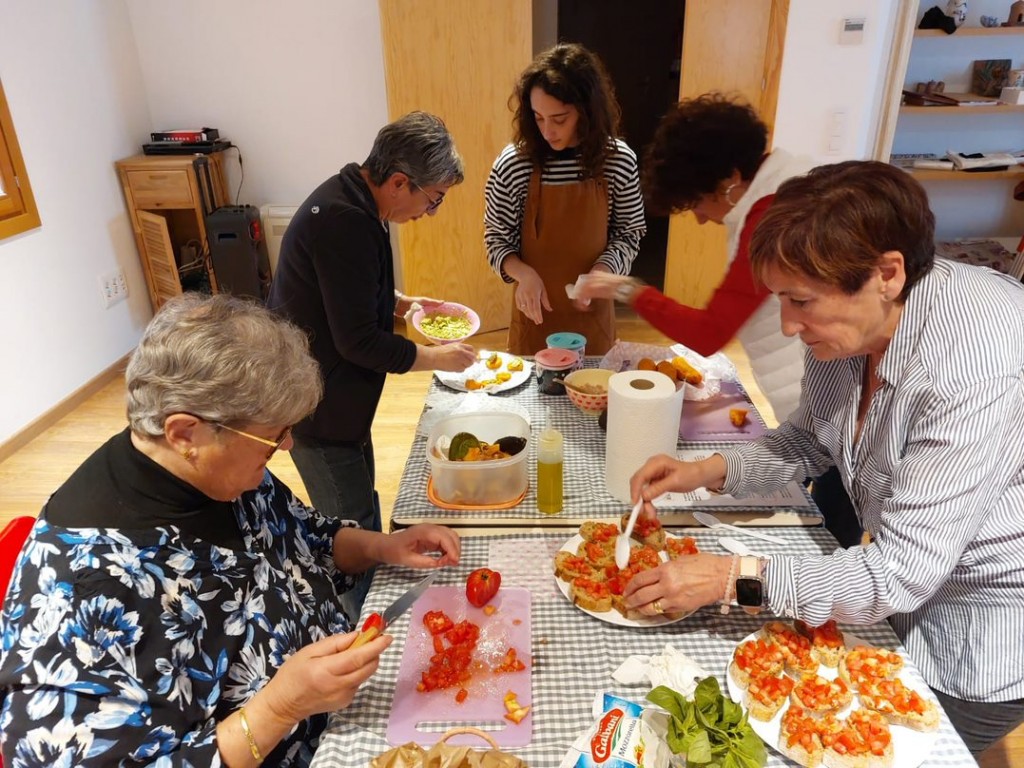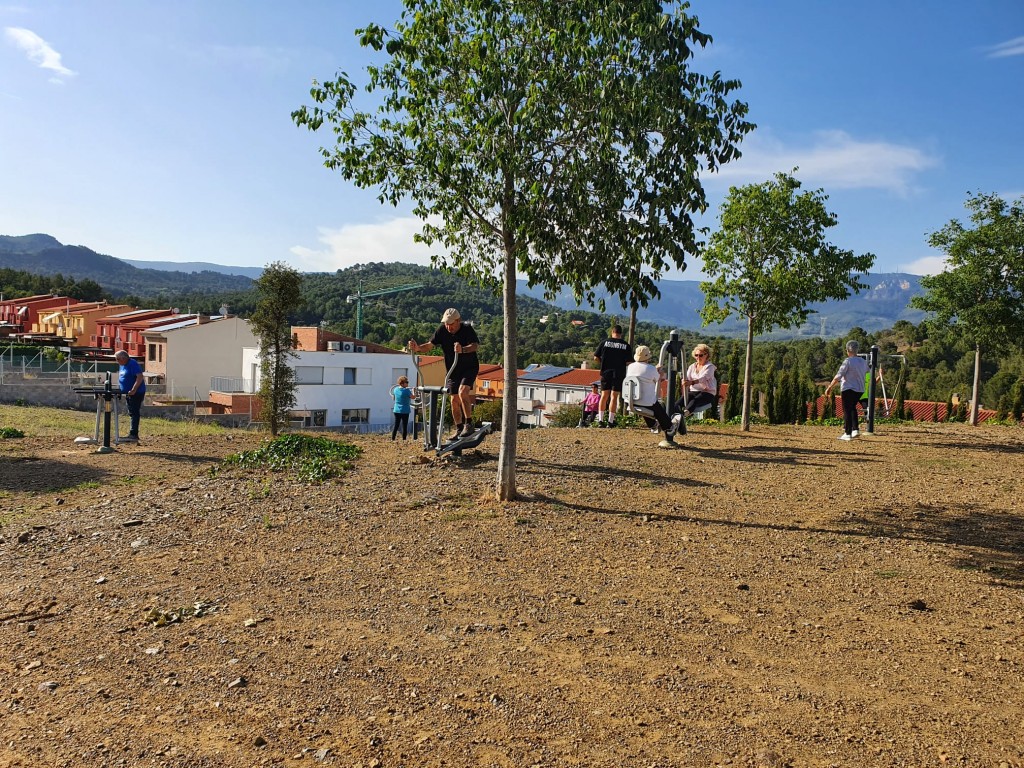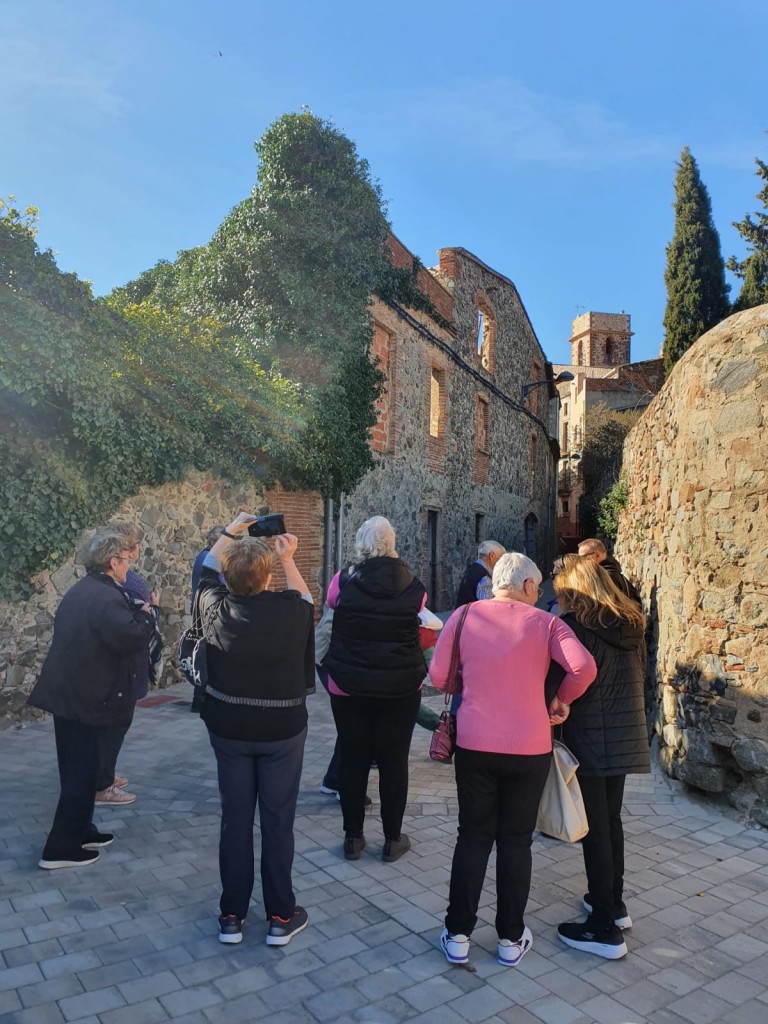13/09/2023
An initiative led by the URV seeks to improve the lifestyle of people aged 60 to 75 living in villages
In this citizen science project the target population helps to design and evaluate activities that promote healthy aging

In this citizen science project the target population helps to design and evaluate activities that promote healthy aging
Photographic walking tours with cell phones and workshops on cooking, relaxation and bio-healthy parks are some of the recent activities in various villages of fewer than 2,000 inhabitants in the Tarragona region, under the coordination of researchers from the Universitat Rovira i Virgili. These activities aim to improve the lifestyle (diet, physical activity and sleep quality) of people between 60 and 75 years and are part of the project “Villages: Alive and Active. Regional balance and innovation,” which strives to combat the depopulation of rural areas through social innovation and smart specialization.
In turn, the project is part of the PECT (Regional Competitiveness and Specialization Projects), a set of initiatives promoted by regional agents and led by local public entities (city councils, county councils and provincial councils). The objective of these highly innovative initiatives is the economic and social transformation of the region. The PECT is co-financed by the Government of Catalonia and the Tarragona Provincial Council and is part of the strategy for smart specialization RIS3CAT and Catalonia’s ERDF operational programme for 2014-2020.
This project is led by researchers Elisabet Llauradó, Lucía Tarro, Anna Pedret and Rosa Solà, from the URV’s Functional Nutrition, Oxidation and Cardiovascular Disease Research Group, and its innovative value lies in co-creation. “It is the participants themselves who design activities to improve lifestyles, adapted to their interests and motivations,” explains Elisabet Llauradó. This type of citizen science research places the participants at the centre of the activities and requires them to assess whether or not they have been successful. Putting people at the centre is a key factor in the research, because it results in interventions that are appropriate to needs and prevents obstacles to a happier life. “The way to improve lifestyle is to work with them and for them, using their experience and creativity to find new solutions and achieve healthy aging,” says Rosa Solà.

This particular project consisted of a talk on nutrition, a cooking workshop, a photographic walking tour with cell phones, a relaxation workshop, a workshop on how to use bio-healthy parks and, finally, a visit to rural schools to explain to the students how they fed themselves when they were children and what food they ate most often.
People between 60 and 75 years of age, known as the young elderly, are a population group that are experiencing many changes, both because of their new role in society, as they move from work to retirement, and because of bodily and metabolic alterations caused by age. “This means that they are at a key moment to improve their lifestyle and initiate the last stage of life with the maximum possible well-being,” say the researchers.
Before starting the project, participants were surveyed about their lifestyle and their anthropometric measurements were taken (body weight, height, waist circumference, strength and muscle function) to find out the status of the various clinical variables. After carrying out the activities, the participants were surveyed again and their body measurements were taken again to check whether the co-created intervention had improved aspects of their lifestyle, the results of which will be analysed this September.

The villages taking part in the project are Vilanova d’Escornalbou, Maspujols, Masroig, Vilalba i els Arcs, Masdenverge, Botarell, Pinell de Brai, La Fatarella, El Montmell, Aleixar, Bot, Caseres, Horta de Sant Joan and La Pobla de Massaluca. Seven villages participated as members of the intervention group, i.e., they took part in the co-created activities, and another seven were only given the initial and final evaluations, so that the villages that received the intervention could be compared with those that did not. This means that the results are more reliable.
In the last term of 2023, an exhibition of the photographs taken on the photographic walking tours will be held. The aim is to encourage physical activity and generate wellbeing by using an everyday tool such as the mobile phone to discover corners of their environment that often go unnoticed. This will be the opportunity to bring the project to an official end by asking the participants to evaluate their experience and having the researchers explain the main results and conclusions of the project.
